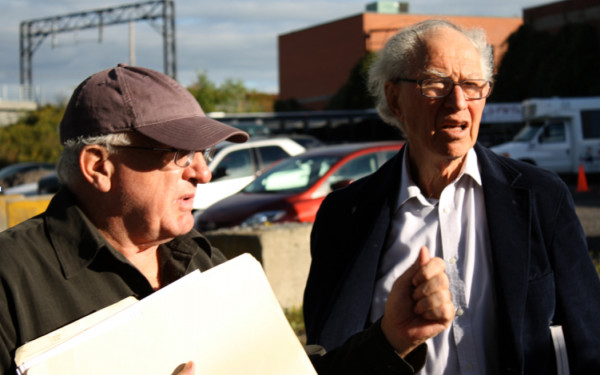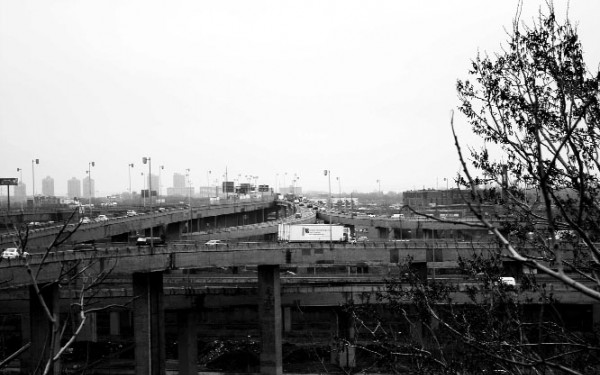Bracing for Impact
St. Henri Residents Fight Against Turcot-Based Evictions
Hundreds of St. Henri residents facing eviction due to the forthcoming Turcot Interchange project will meet with the Ministère des Transports Québec this week to discuss the potential ramifications of the mega-project on their community.
Tonight, residents of 780 St. Remi St.—a loft near the north end of Rue de Cazelais—will meet with the MTQ to discuss the expropriation of the property. A similar meeting will occur on Thursday, with residents of Cazelais Nord and Desnoyers Ouest.
They are among hundreds whose homes will be leveled to make room for the project, despite the MTQ stating that “all houses on Cazelais Nord and Desnoyers Ouest will be preserved [and] every attempt will be made to minimize the potential impact” on the community.
The recently-revised Turcot plan, which rejects recommendations made by the City of Montreal, ignores Mayor Tremblay’s assertion that any Turcot project would reduce traffic congestion by a third and would not lead to the expropriation of any homes in the working class neighborhood, which is dotted with affordable housing.
“The Mayor has done a complete aboutface,” said Jody Negley of the Citizens’ Committee of the Village des Tanneries.
“He has bowed to the pressure and created an agreement that will lead to hundreds of people being kicked out,” he continued.
“Transport Quebec is planning on offering resettlement packages, but who knows what terms will be attached and how they will decide who is eligible?”
The new MTQ proposal remains focused on development of automotive infrastructure, with projected traffic circulation increasing to over 310,000 cars per day.
Negley criticized “the green-washing of this project,” which she believes does nothing to reduce the reliance on automobiles for commuters.
“A lot of the general public does not know what to believe, so they are taken in by the spin and believe what they read. You actually have environmental groups signing off on this thing because of a reserved bus lane. Considering the alternatives proposed, which would remove cars from the highway and build public transport, this project is unacceptable.”
Negley also raised concern with the project’s impact on the borough of Le Sud Ouest, where some 400 residents will be forced to leave their homes.
“The work the community has invested in itself trying to make our neighborhood safer and happier is going to be demolished—if not by the expropriations and a highway, then by the construction that will drag on for years.”
The CCVT has worked to improve life for the residents of le Tanneries, creating public gardens and common green space and encouraging community participation in their maintenance.
Mobilization Turcot, a group opposing the new project, held a demonstration on Nov. 11, with nearly 200 people converging on the Decarie Expressway.
A huge banner reading Turcot: moins de pollution, zéro expropriation expressed the crowd’s frustrations, who view the MTQ’s new Turcot plan as unacceptable.
According to housing activist Patricia Viannay, residents of les Tanneries who will not be expropriated and must endure living in a heavy construction zone will have the option of appealing to Le Ministère de la Santé et des Services Sociaux, who has authority to alter projects of provincial departments and order remunerations and other legal processes.
She emphasized that financial compensation will prove inadequate in the wake of the effects to the community.
“A third of the Village des Tanneries will be demolished. This is a disaster and we will never be able to go back,” she said.
“What is monetary compensation when your village is demolished and when you lose your friends and neighbours?”
This article originally appeared in Volume 31, Issue 14, published November 16, 2010.


_600_832_s.png)



__600_375_90_s_c1.jpg)
